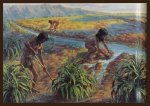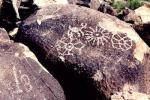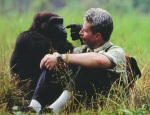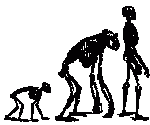Who, Where, What and Why…The Hohokam
Who were the Hohokam? The Hohokam were a group of people that occupied the southern Arizona area from about A.D. 1 to 1450. With no form of writing, they are not technically considered a civilization by archeologist, but you can still find evidence of their social makeup throughout the area.
Demonstrating their complex social structure are the hundreds of miles of canals that they built in order to irrigate their crops. These canals, unrivaled in North America, would have taken an amazing amount of group organization. Leaders were needed to plan and make decisions; communities had to coordinate workers and maintenance of the canals. Although this may sound like a simple feat now, with our extensive communication network, in the days of the Hohokam, it was an impressive achievement.
Another prevalent remnant of the Hohokam people is the rock art, or petroglyphs, they left behind. A petroglyph was a design made by pecking, scraping, and rubbing away the dark surface of a rock in order to leave an impression. Common images are simple shapes such as spirals, concentric circles, wavy and zigzag lines; also seen are figures such as human forms, lizards, and four legged animals. All of these images had a symbolic message that they conveyed to the Hohokam people; unfortunately, we can now only guess at their true meanings.
 There are a few myths about these rock designs that must be cleared for full understanding. Many people believe that these types of rock art are a written language; however, they are not symbols for sounds or specific words, but general connotations. Also, they do not tell a story; their proximity to one another is probably just due to the fact that there was little space for the drawings, not to group in a specific order.
There are a few myths about these rock designs that must be cleared for full understanding. Many people believe that these types of rock art are a written language; however, they are not symbols for sounds or specific words, but general connotations. Also, they do not tell a story; their proximity to one another is probably just due to the fact that there was little space for the drawings, not to group in a specific order.
These symbols are more similar to our modern day stoplight. They convey a clear, definite meaning: red means stop, yellow means slow, green means go. However, if someone from another culture and time were to look at a stoplight, they would have no understanding of these interpretations. We can view the petroglyphs of the Hohokam, but without someone from the culture itself to interpret; we will probably never know what they actually mean.
Anthropology, a Definition
When I tell people that I am interested in anthropology, I often get the same question: What is anthropology? To be vague, I usually reply that it is one of the approaches to studying society. To be more specific, anthropology studies almost every aspects of humanity: past, present, future, culture, biology, and language. It is difficult to determine where one facet of this area of study begins and the other ends.
These facets include the four subfields of general anthropology: cultural, biological, archeological, and linguistic anthropology. The names of these subfields are, for the most part, self explanatory.
Cultural anthropologists describe, analyze, interpret, and explain the society and culture of different civilizations and then use that information to compare and contrast them. There are two dimensions to this subfield: ethnography and ethnology. Ethnographers participate in field work during which they gather information to build an account of the particular culture. Ethnology uses the data collected by researchers to compare and contrast cross-culturally. Cultural anthropologist usually work with less developed societies that are relatively poor and powerless since these people make up the majority of our world today.
Archeology uses the materials that a civilization leaves behind to describe and interpret past human’s behavioral patterns. Common artifacts found are items like tools, weapons, and buildings. Less obvious objects are garbage and plant and animal remains. These can help archeologist determine if the society domesticated any plants or animals (both of which have different characteristics than wild plants and animals) as well as if, or when, they consumed them. This is just one example of how archeologists attempt to piece together the workings of cultures that lived hundreds or thousands of years ago by analyzing the objects they left behind.
Biological (or physical) anthropologists study the diversity of human biology across different areas and over periods of time. There are five more specific areas of study within biological anthropology: Paleoanthropology (using the fossil record to study human evolution), Human genetics, Human growth and development, Human biological plasticity (the body’s ability to change), and the biology of primates. All of these studies combine to create a pieced together picture of human biology over time and space.
As you can see, anthropology is a very all-encompassing field of study, not easily defined in one or two sentences and only touched on in three paragraphs. All of the information read here is from the eleventh edition of “Anthropology: The Exploration of Human Diversity” by Conrad Phillip Kottak.










